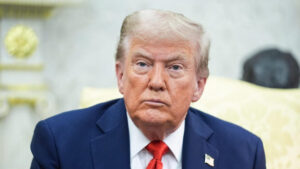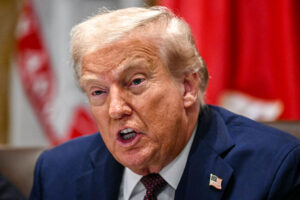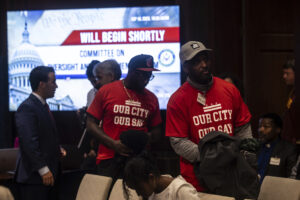The Dictatorship
Trump just showed us why he’s not winning the Nobel Peace Prize anytime soon
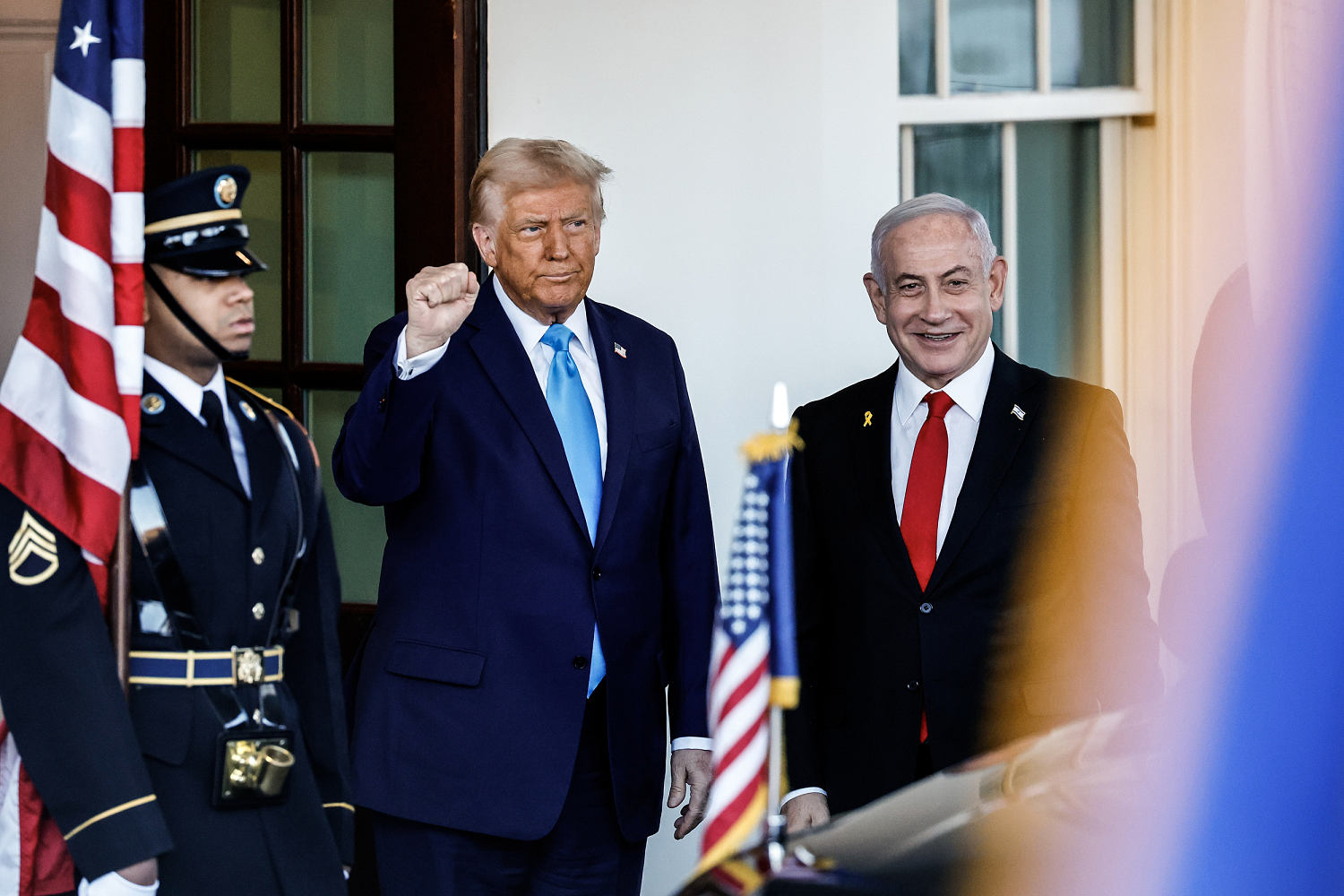
UPDATE (Feb. 4, 2025, 8:35 p.m. E.T.): During a joint press conference Tuesday night with Israeli Prime Minister Benjamin Netanyahu, President Donald Trump said: “The U.S. will take over the Gaza Strip and we’ll do a good job with it, too.”
As Israeli Prime Minister Benjamin Netanyahu visited President Donald Trump at the White House on Tuesday and King Abdullah II of Jordan does the same on Feb. 11, one question keeps bubbling up to the surface: Can Donald Trump, the self-professed “peacemaker” who has eyed the coveted Nobel Peace Prize for many years, go where no U.S. president has gone before by striking a transformational, comprehensive peace deal in the Middle East?
Trump’s critics would answer with a big eye roll. And yet his pressuring of Netanyahuto sign onto the first stage of a three-phase ceasefire deal with Hamas — three more hostages were freed over the weekend in return for more than 100 Palestinian prisonersthe fourth round of prisoner exchanges since the deal took effect in mid-January — at least gives some credibility behind the ambition. Trump clearly has Middle East peace on his mind, and the Trump administration’s desire to expand the 2020 Abraham Accordswhich normalized relations between Israel and four Arab countries, is never far from its lips. As national security adviser Mike Waltz said before Trump even stepped foot into office for his second term, Israeli-Saudi normalization is a “huge priority” for the team.
Trump clearly has Middle East peace on his mind.
But Trump can kiss all of this goodbye if he intends to move forward with his ongoing calls to expel the Palestinian population from Gaza, an idea he referenced during his joint press conference with Netanyahu at the White House. While he didn’t specifically use the word “expel” in his remarks, his suggestion that Palestinians might want to think about packing up their things and going to another area while reconstruction commences has caused shock and trepidation across the Arab world. Trump even suggested that his plan was in the works, with various countries contacting him and pledging assistance. Whether or not that’s the case, Trump appears increasingly invested in making this relocation scheme a reality. “Gaza is a demolition site right now,” Trump told reporters on Tuesday. “You can’t live in Gaza right now.”
If this were just another one-off, rambling comment from Trump, perhaps it could be dismissed as a nothing-burger. But it isn’t. Trump has referenced this idea on earlier occasions, first on Jan, 28, when he name-dropped Egyptian President Abdel Fattah el-Sisi and Jordanian King Abdullah for help in taking Gaza’s population in, and again on Jan. 31, when he was signing executive orders in the Oval Office. Asked by a reporter about Egypt and Jordan’s refusal to play along, Trump matter-of-factlystated that they didn’t have a choice: “They will do it. They will do it. They’re gonna do it, OK? We do a lot for them, and they’re gonna do it.”
Trump’s pretensions aside, Egypt and Jordan have their own reasons for not wanting to turn themselves into Trump’s enforcers. The most obvious, of course, is that such a proposition is extraordinarily unpopular in the Arab world. Countries throughout the Middle East disagree on a lot of things, but dislocating more than 2 million Palestinians from their homes in Gaza and opening the door to Israeli annexation of the coastal enclave — a fantasy ultranationalist Israeli ministers like Bezalel Smotrich surely dream about — certainly isn’t one of them. If there was any dispute about that, the Arab League put it to rest over the weekend, when it released a statementthat such plans “threaten the region’s stability, risk expanding the conflict, and undermine prospects for peace and coexistence among its peoples.”
Egypt and Jordan also have self-interested reasons for dismissing any Gazan relocation effort. Jordan, for one, is already hosting more than 2 million Palestinianswho are registered as refugees, making approximately half of the kingdom’s population of Palestinian origin. As a resource-poor country, Jordan doesn’t have the luxury of sustaining a new influx of new refugees and wouldn’t want to, even if Washington or its Gulf allies picked up the tab (the U.S. already provides Jordan with $1.45 billionin foreign aid every year). For Egyptian President Sisi, the issue is less about economics and more about security. This is the same guy, after all, who led a 2013 military coup against a democratically elected Muslim Brotherhood-led government (Hamas was established in 1987 as an affiliate of the Muslim Brotherhood), killed more than 800 peoplein the process and jailed tens of thousands more in an attempt to snuff out any resistance. If Sisi wasn’t willing to let Palestinians into Egypt when Israeli military operations in Gaza were at its height, he’s unlikely to do so when the guns have fallen silent (for the time being).
Encouraging or compelling Palestinian civilians to leave Gaza, even if it’s ostensibly to accelerate reconstruction, is liable to kill Trump’s diplomatic agenda in the Middle East.
Encouraging or compelling Palestinian civilians to leave Gaza, even if it’s ostensibly to accelerate reconstruction, is liable to kill Trump’s diplomatic agenda in the Middle East. At the top of the wish list is an Israeli-Saudi normalization accord, something his predecessor Joe Biden couldn’t finalize before his term ended, despite a year-and-a-half of talks with Israeli and Saudi officials. Such a deal would be a groundbreaking accomplishment for Washington in a region often associated with sunk costs, self-defeating policies and missed opportunities. And just as important for Trump, it would be an extremely impressive achievement he could rightfully brag about.
Yet none of it will happen if Palestinians are forced to leave their own lands. It would snuff out an expansion of the Abraham Accords before the Trump administration even got the ball rolling. Although the Saudi government may have been open to a normalization deal with Israel before the war in Gaza, it’s no longer content with token Israeli concessions on behalf of the Palestinians. The Saudis now want a concrete pathway toward the establishment of a Palestinian state. As Saudi Crown Prince Mohammed Bin Salman said in September, “The [Saudi] kingdom will not stop its tireless work towards the establishment of an independent Palestinian state with East Jerusalem as its capital. We affirm that the kingdom will not establish diplomatic relations with Israel without that.” The Saudi foreign minister reiterated that position in Novemberand it’s about as clear as it can get: Normalization without a Palestinian state (or at least a tangible process that leads to one) is impossible.
Trump, therefore, needs to ask a fundamental question: What’s more important to him? Doing something all of his predecessors couldn’t do — shepherding formal diplomatic relations between Israel and the Arab world’s most important state — or catering to the whims of Israel’s ultranationalists by proposing a cockamamie scheme that equates to deporting more than 2 million Palestinians from their own homes? The first is difficult to achieve but still doable; the second would cause more problems than they’re worth by compromising Washington’s diplomatic relationships in the Middle East, pushing his dream deal further away, and even risking the collapse of a ceasefire deal in Gaza he helped usher into being. And in this scenario, Trump can forget about seeing his name in the annals of Nobel history.
Daniel R. DePetris is a fellow at Defense Priorities and a syndicated foreign affairs columnist at the Chicago Tribune.
The Dictatorship
Trump’s economy takes a toll on middle-class Americans as his poll numbers on economics fall
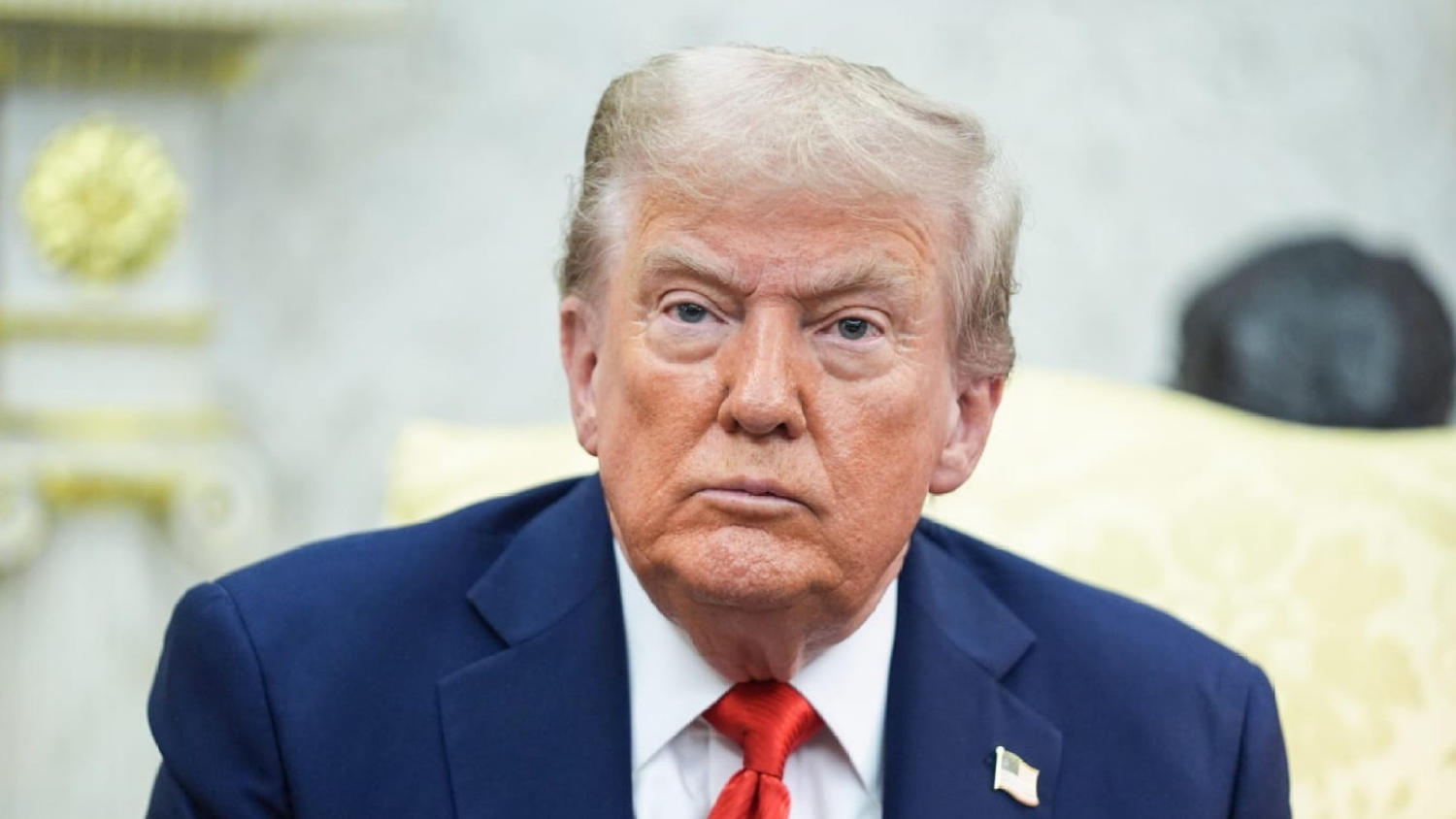

-
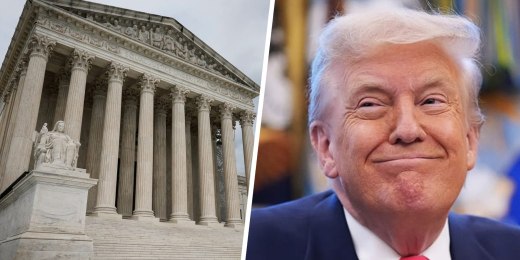
Trump’s winning streak: Law professor breaks down his Supreme Court shadow docket victories
07:03
-
Now Playing
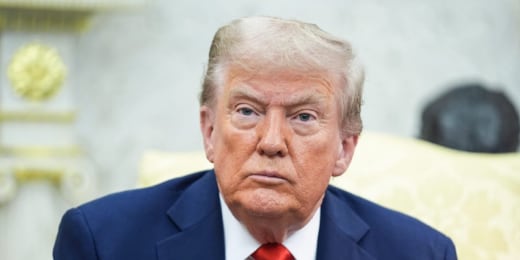
-
UP NEXT

How social media can have an influence in attempted assassinations and mass shootings
11:38
-

What Congress should ask FBI Director Patel about in next week’s Epstein files deposition
06:23
-

Fmr. Vice President Harris shares internal debate on asking Biden to drop from race early in memoir
05:56
-
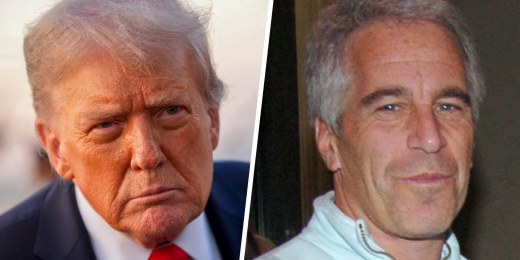
Trump changes tune on Epstein’s birthday book as Dem lawmakers push for files release
06:00
-
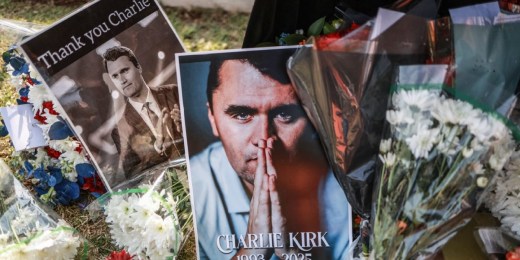
How the killing of Charlie Kirk could change security protocols for political figures
08:30
-

Report: Four women who have immunity in the Epstein case may know if there’s a client list
05:15
-
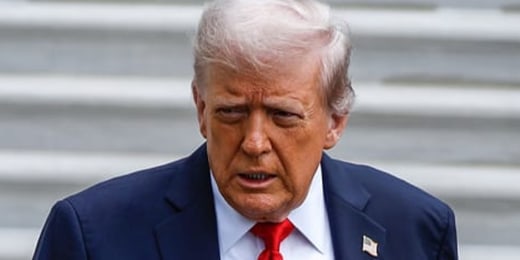
New NBC News Poll: 21% of Americans FURIOUS with Trump’s second term so far
10:19
-

Epstein survivor confirms a new client list made by survivors is being put together
08:32
-
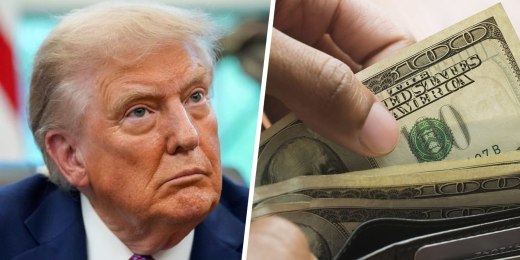
Trump’s disapproval hits 59% on handling of trade and tariffs
06:25
-
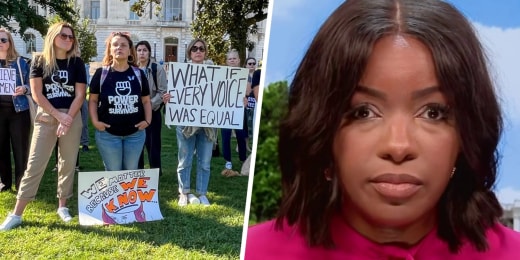
Survivors turn up the heat on Congress to vote for release of Epstein files
08:52
-
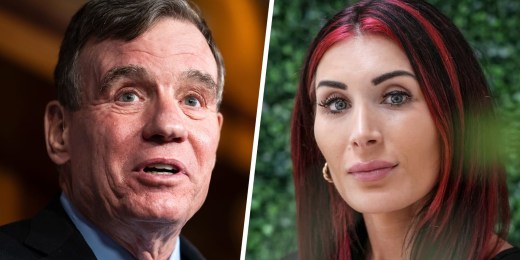
Former Rep. baffled as activist Laura Loomer prevents Dem Senator’s visit to spy agency
05:22
-

House Speaker claims Trump was an FBI informant in the Epstein case
10:40
-
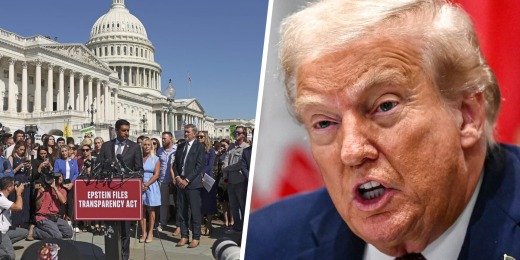
Bad news for Trump: Republicans join survivors, Democrats in pursuit of Epstein files
08:50
-
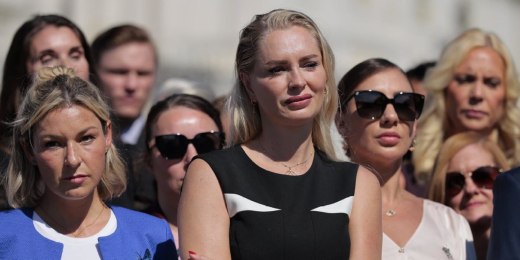
Survivors of Epstein deliver powerful demand for transparency to Trump administration
06:29
-
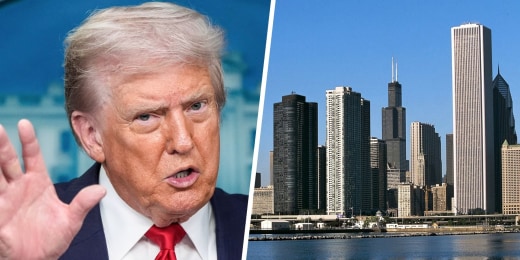
Trump threatens Chicago with mass deportations as Mexican Independence Day celebrations take place
04:51
-
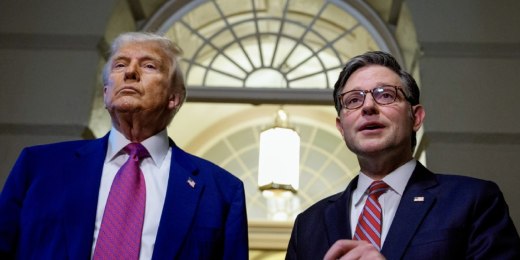
Pressure mounts on Trump, Speaker Johnson to release Epstein files after survivors news conference
07:08
-
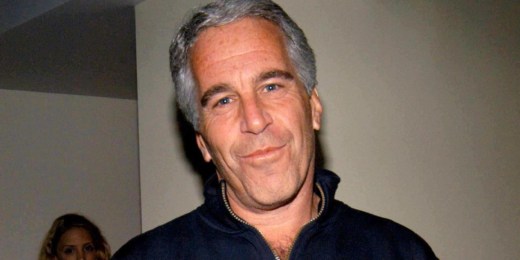
Exclusive: DOJ says names of two associates Epstein wired money to should stay secret
02:36
-

Prepare for inflation: Back-to-school prices soared, holiday gifts likely will too
03:36
-

Trump’s winning streak: Law professor breaks down his Supreme Court shadow docket victories
07:03
-
Now Playing

Trump’s economy takes a toll on middle-class Americans as his poll numbers on economics fall
08:03
-
UP NEXT

How social media can have an influence in attempted assassinations and mass shootings
11:38
-

What Congress should ask FBI Director Patel about in next week’s Epstein files deposition
06:23
-

Fmr. Vice President Harris shares internal debate on asking Biden to drop from race early in memoir
05:56
-

Trump changes tune on Epstein’s birthday book as Dem lawmakers push for files release
06:00
The Dictatorship
What Trump’s wildly different responses to two assassinations tell us
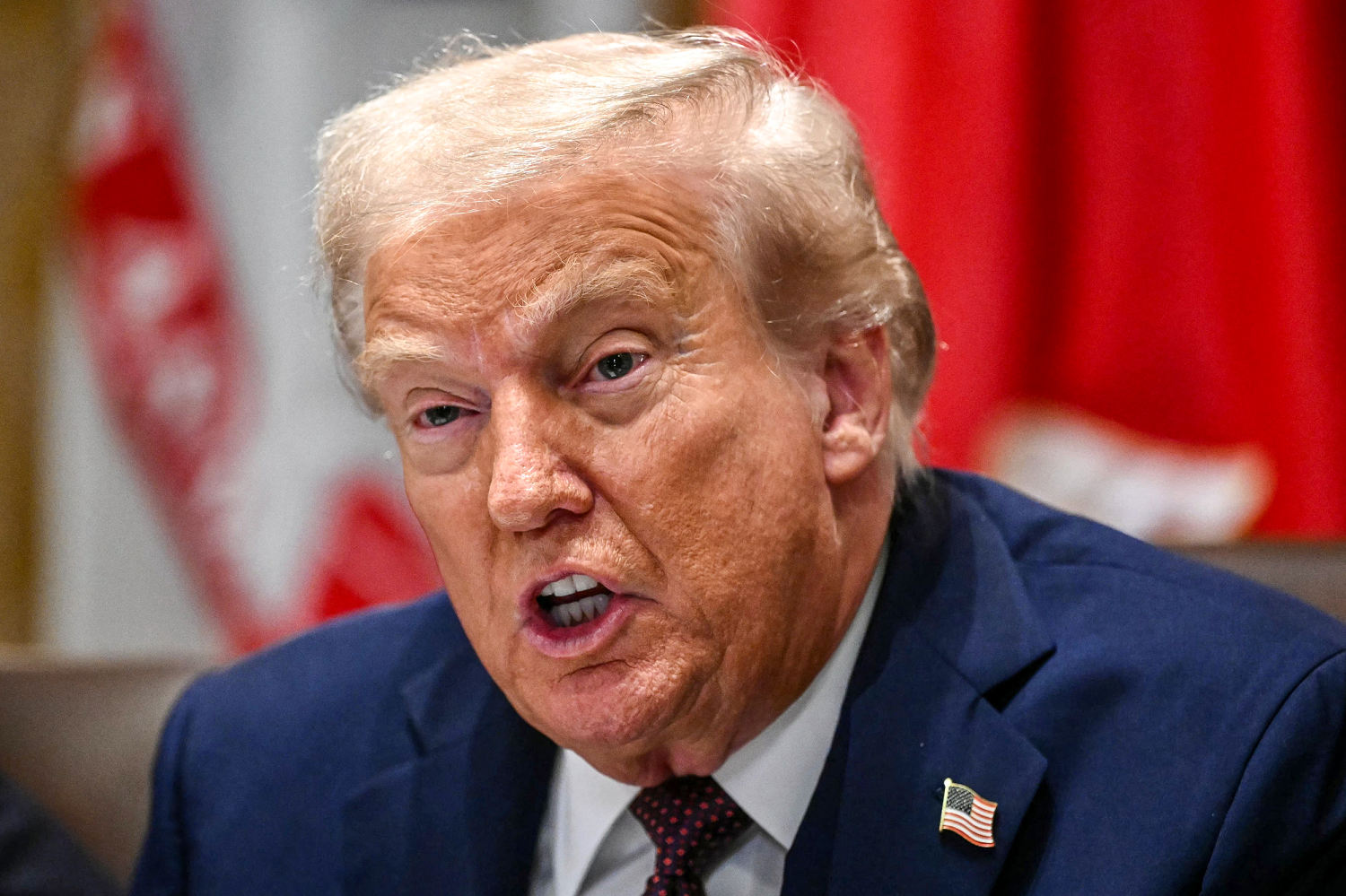
In his sharply differing reactions to two high-profile assassinations of political figures this year, the president of the United States has effectively encouraged the public to apply a partisan lens to the value of human life.
The two killings in question — a lone wolf assassination of former Minnesota House Speaker Melissa Hortman in June and the shooting of Turning Point USA founder Charlie Kirk at a Utah Valley University speaking event this past week — elicited very different kinds of treatment from the White House. President Donald Trump gave scant attention to Hortman’s killing, while he framed the killing of Kirk as a cataclysmic national tragedy and a political rallying cry for the right.
Republican lives matter more than Democratic lives, Trump is effectively telling his base.
Republican lives matter more than Democratic lives, Trump is effectively telling his base. And in a shocking comment on “Fox & Friends” on Friday, Trump appeared to use Kirk’s assassination to explicitly designate political violence a partisan issue too, by defending violent right-wing extremists as sharing his political goals of bringing down “crime” and left-wing extremists as “the problem.”
In response to the murder of Hortman, Trump offered a brief, impersonal condemnation of her killing on Truth Social, stating that “such horrific violence will not be tolerated.” He didn’t do much else. He did not offer a substantial eulogy for her, or deliver an address on political violence, as he did after Kirk’s death. Unlike former President Joe Biden, Trump did not attend the funeral. The day after Hortman’s killing, when Trump was asked if he had called Minnesota Gov. Tim Walz, he said, “I could be nice and call, but why waste time?” Trump suggested that part of the reason he didn’t want to call Walz was because he thought Walz was to blame for the killing, or at least the events leading up to it. That claim was nonsense. But peddling that narrative did allow Trump to divert attention from the fact that authorities found the suspected shooter had a hit list that named mostly Democratic politicians or figures tied to abortion rights, and that his close childhood friend said he voted for Trump.
In response to Kirk’s killing, Trump responded with tremendous urgency. He immediately issued an order to lower American flags to half-staff at the White House, all public buildings, U.S. embassies and military posts. He announced he would award Kirk the Presidential Medal of Freedom posthumously. He delivered a wrathful four-minute video address from the White House condemning Kirk’s assassination and promising vengeance against the left. As my colleague Anthony Fisher notesduring that address he made “wildly irresponsible assumptions about the then-unknown suspected killer’s motives. He completely ignored right-wing violence (like the kind he incited in Washington on Jan. 6, 2021), and he explicitly threatened to bring down the force of government on his political opponents.”
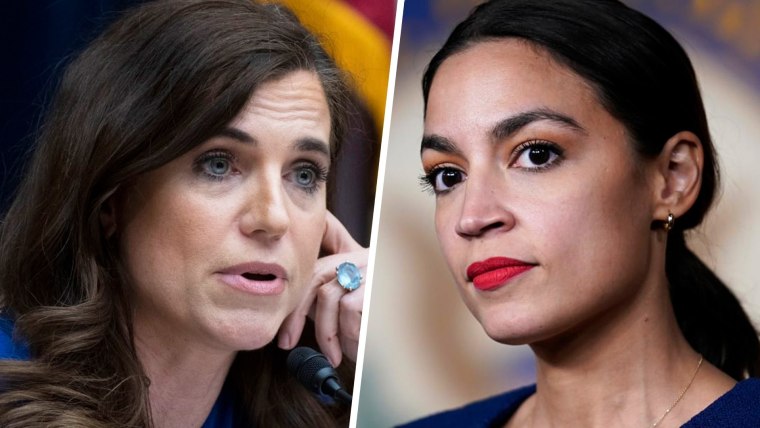
It was bad enough that Trump showed such divergent responses to the equally indefensible assassinations of Hortman and Kirk — and used the latter to promote the idea of a political crackdown on the left. But his appearance on Fox News on Friday morning involved what I found to be a genuinely jaw-dropping escalation, as he appeared to suggest that violence from the right was more defensible than violence from the left. Fox News host Ainsley Earhardt noted that there are radicals on both the right and the left and expressed concern about people cheering for Kirk’s death before asking Trump, “How do we fix this country?” He replied:
I’ll tell you something that’s going to get me in trouble, but I couldn’t care less. The radicals on the right oftentimes are radical because they don’t want to see crime. They don’t want to see crime. They’re saying, ‘We don’t want these people coming in. We don’t want you burning our shopping centers. We don’t want you shooting our people in the middle of the street.’ The radicals on the left are the problem. And they’re vicious, and they’re horrible, and they’re politically savvy.
What Trump appears to be saying is that left-wing radicals are a problem, while right-wing extremists are, in essence, part of his political project and therefore don’t deserve condemnation — or at least not the kind of condemnation that those on the left do. He is effectively telegraphing the idea that a certain degree of political violence on the right could be acceptable — or at least should be seen as politically sympathetic and well-intentioned. As right-wing extremists are reactivating and rallying around Kirk’s death as a pretext for revenge against the left, Trump’s new statement echoes his “stand back and stand by” order to the Proud Boys in 2020 before they stormed the U.S. Capitol on Jan. 6. It would be reasonable in this context for right-wing extremists to surmise that Trump is again signaling that he could be lax on enforcement or try to offer them some kind of immunity — just as he did by commuting the sentences of Proud Boys and pardoning their leader.
In a democracy, all political violence should be considered entirely unacceptable, no matter the ideology of the person committing the act or on the receiving end of it. Both the deaths of Hortman and Kirk were terrible tragedies and completely unjustifiable. But in his selective mourning and politicization of their deaths, Trump suggested one tragedy — more importantly, one type of tragedy — mattered more.
Zeeshan Aleem is a writer and editor for BLN Daily. Previously, he worked at Vox, HuffPost and Blue Light News, and he has also been published in, among other places, The New York Times, The Atlantic, The Nation, and The Intercept. You can sign up for his free politics newsletter here.
The Dictatorship
The data on vaccine safety is public and clear — but I just spelled it out for Congress anyway
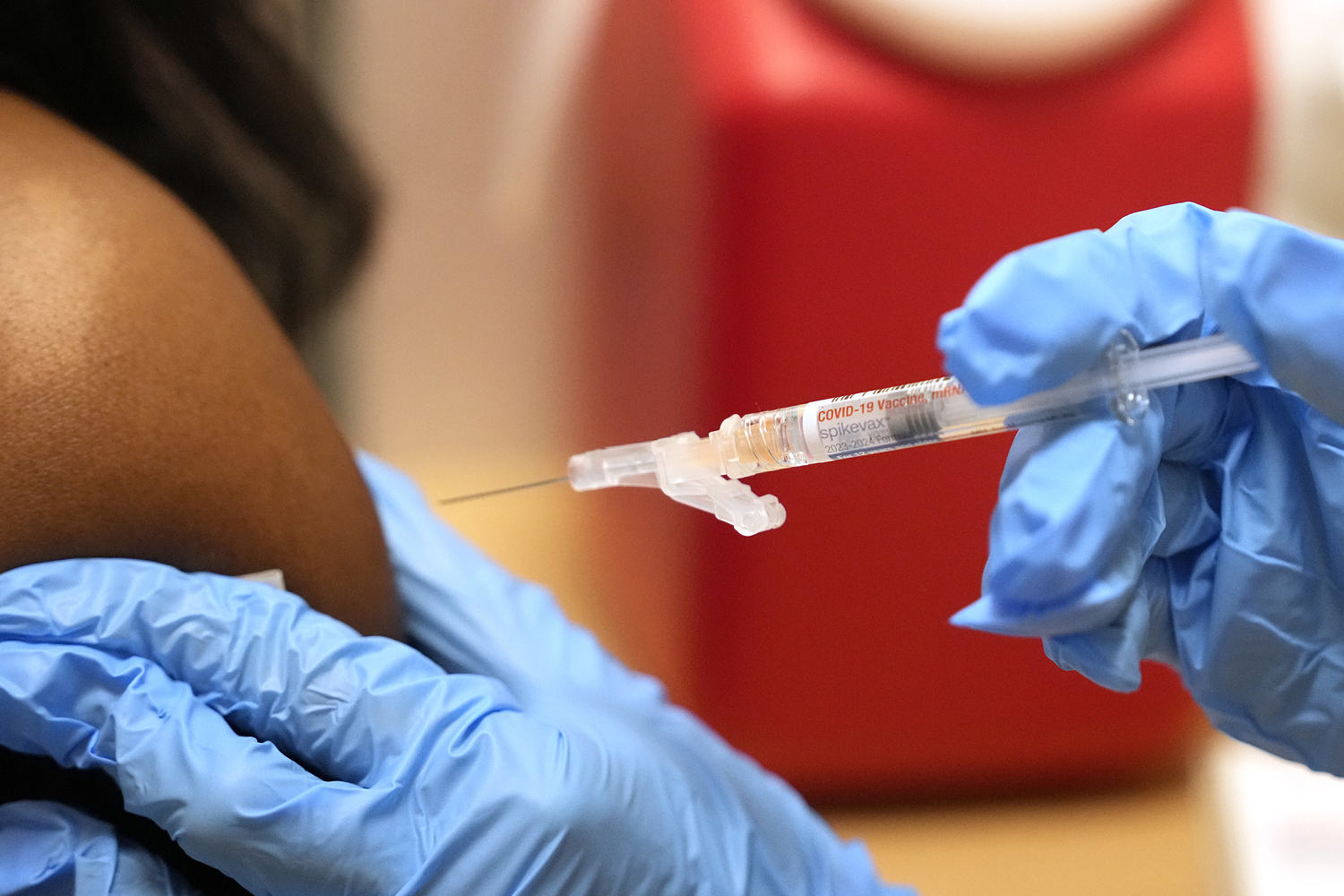
(The following is testimony presented to the U.S. Senate Permanent Subcommittee on Investigations on Sept. 9. It has been edited for style and length.)
The scientific evidence supporting vaccine safety and efficacy represents one of the most extensive and transparent bodies of medical research ever assembled. Vaccines have saved an estimated 154 million lives globally over 50 years, eliminated smallpox from the planet and reduced diseases like polio and measles by over 99% in the United States.
Anyone with internet access can read the same studies I read, examine the same data I examine and verify the same conclusions.
Since April 2025, I have co-led the development of a comprehensive public database cataloging 1,704 randomized controlled trials of vaccines spanning from 1941 to 2025, involving more than 10.5 million participants. Multiple independent U.S. surveillance systems continuously monitor vaccine safety in real time, detecting adverse events as rare as 1 per 1 million doses. Recent large-scale studies, including a Danish cohort following 1.2 million children, consistently demonstrate vaccine safety across diverse populations.
The Centers for Disease Control and Prevention estimates that vaccines given to U.S. children born between 1994 and 2023 will prevent approximately 508 million illnesses, 32 million hospitalizations and 1,129,000 deaths over their lifetimes, saving nearly $2.7 trillion in societal costs. This vast evidence base is publicly accessible, peer-reviewed and continuously updated. If vaccines caused a wave of chronic disease, our safety systems — which can detect one-in-a-million events — would have seen it. They haven’t.
I am also part of the Center for Infectious Disease Research and Policy’s Vaccine Integrity Projectwhere our team is conducting a systematic review and meta-analysis of respiratory virus immunizations from approximately the last two years. This ongoing analysis has examined 590 studies from over 17,000 identified references to date.
As an infectious diseases physician at Stanford University School of Medicine, I have treated many adults with vaccine-preventable diseases throughout my career. These clinical experiences, combined with my research analyzing the extensive evidence base for vaccine safety and efficacy, inform my testimony today.
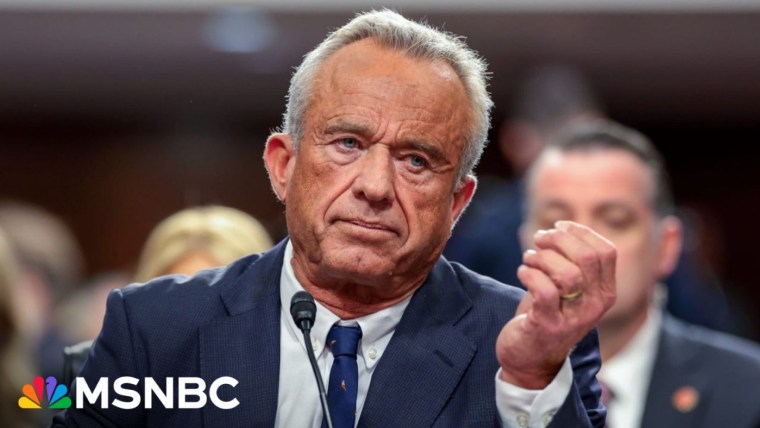
I should note that I am here in my personal capacity, and the views I share reflect my own professional experience and analysis of the scientific evidence. I have received minimal payments totaling $45.62 over multiple years for food and beverage at work-related events, as documented in the federal Open Payments database. My research time is either self-funded or supported by Stanford University. I testify in my personal capacity as a physician-scientist committed to rigorous evidence and transparent science.
The safety and efficacy data for vaccines is published in peer-reviewed journals, accessible through PubMed, analyzed by independent researchers worldwide, and scrutinized by regulatory agencies whose deliberations are public record. Anyone with internet access can read the same studies I read, examine the same data I examine and verify the same conclusions.
Our international team has built a public database of randomized controlled trials of vaccines. Every entry links directly to its peer-reviewed source publication, allowing anyone to examine the methods, data and results independently. This is how science should work — open, transparent and reproducible.
The transparency of vaccine science extends throughout history. When Edward Jenner published his vaccination findings in 1798, he self-published Variolae Vaccinae for public scrutiny. The 1954 Salk polio vaccine trial involved 1.8 million children in a publicly monitored study, with results announced to the world and data published for examination. This tradition continues today with large-scale epidemiologic studies published in peer-reviewed journals for all to examine.
The United States maintains multiple independent vaccine safety monitoring systems, each operating transparently.
When real risks exist, they are detected, quantified, disclosed and incorporated into guidance. That is how a functioning safety system works.
The Vaccine Adverse Event Reporting System (VAERS) makes every report publicly accessible at vaers.hhs.gov, where anyone can search, download and analyze raw data. The Vaccine Safety Datalink (VSD) covers over 10 million Americans across nine health care organizations, with findings regularly published in peer-reviewed journals and presented at public Advisory Committee meetings. The Post-licensure Rapid Immunization Safety Monitoring (PRISM) system monitors over 190 million people, publishing results openly.
These systems have successfully detected rare adverse events — including intestinal blockage with a rotavirus vaccine in 1999, leading to its withdrawal; rare blood clots with the Johnson & Johnson Covid vaccine (3 per 1 million doses), detected within weeks; and myocarditis signals with mRNA vaccinespromptly investigated and quantified.
When real risks exist, they are detected, quantified, disclosed and incorporated into guidance. That is how a functioning safety system works.
Vaccination has historically united Americans across political lines. George Washington ordered Continental Army variolation against smallpox in 1777, declaring, “I have determined that the troops shall be inoculated.” His orders, preserved in the Library of Congress, reflect understanding that disease threatened his army more than British forces.
Throughout American history, presidents from both parties have championed vaccination as essential public health policy. President Dwight D. Eisenhower signed the Poliomyelitis Vaccination Assistance Act in 1955, stating, “We all hope that the dread disease of poliomyelitis can be eradicated from our society.” President Ronald Reagan proclaimed National Adult Immunization Awareness Week, noting that “vaccination against infectious diseases saves lives and lowers health care costs.” President George H.W. Bush mobilized CDC teams to cities during the 1991 measles resurgence, urging parents: “The vaccines are available. Please, make sure your child is immunized.” Even recently, President Donald Trump acknowledged: “Look, you have vaccines that work — they just pure and simple work. They’re not controversial at all.”
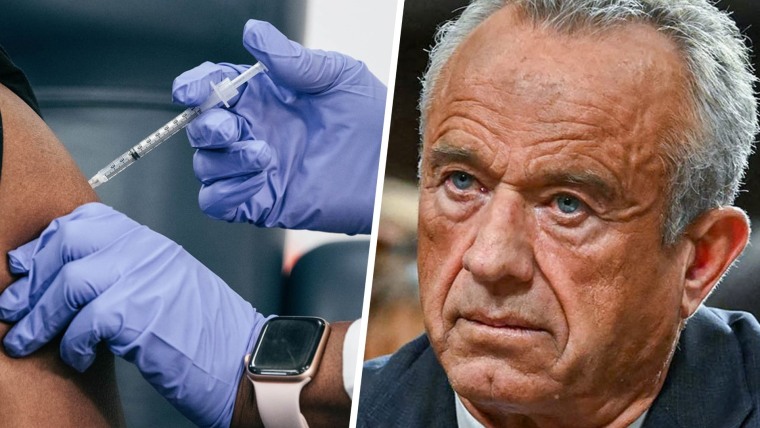
The evidence of vaccine effectiveness is documented in every health department report and mortality database. This data is not hidden — it is published by the CDC and available to anyone.
Before vaccines, measles infected 3-4 million Americans annually, killing approximately 500 children each year. After widespread vaccination led to elimination in 2000, deaths typically numbered zero to two per year. We are currently experiencing our worst outbreak in decades — 1,431 cases through September 2025, with three deaths, overwhelmingly in undervaccinated communities.
Polio paralyzed 16,000 Americans annually in the pre-vaccine era. In 1952 alone, polio caused 57,879 cases and 3,145 deaths, and paralyzed 21,269 Americans. Since 1979there have been zero cases of wild poliovirus in the United States — a 100% reduction.
Haemophilus influenzae type b (Hib) caused 20,000 cases of severe disease in children under 5 each year, killing approximately 1,000 annually. After vaccine introduction in 1987, cases dropped by over 99%. From 2009 to 2018, only 36 total Hib cases occurred in American children under 5 — across that entire decade.
The transformation is striking: diphtheria killed 13,000-15,000 Americans annually in the early 20th century; in 2024, we had one case. Pertussis killed hundreds of infants yearly; today, typically fewer than 10. Vaccines have saved an estimated 154 million lives globally over 50 years, including 146 million children under 5 years old and 101 million infants. For every death averted, 66 years of full health were gained on average, translating to 10.2 billion years of full health gained. Vaccination has accounted for 40% of the observed decline in global infant mortality — 52% in Africa. In 2024, a child under 10 years old is 40% more likely to survive to their next birthday because of historical vaccination programs.
For respiratory virus vaccines, the primary goal and realistic expectation is to prevent severe disease and death, not infection.
During the 2023-24 influenza season, over 200 children died from flu; among vaccine-eligible children with known vaccination status, more than 80% were not fully vaccinated. Covid-19 vaccines, developed with unprecedented transparency through publicly broadcast Food and Drug Administration and CDC meetings, prevented catastrophic loss of life. A rigorous analysis estimated vaccines prevented 2.5 million deaths globally from 2020 to 2024 (with sensitivity estimates ranging from 1.4-4.0 million). Before vaccines, ICUs were overwhelmed. By mid-2021, nearly every fatal case was among the unvaccinated. During the delta surge, unvaccinated adults were 53 times more likely to die than those vaccinated and boosted.
I cared for hundreds of Covid patients and watched far too many die. I lost many unvaccinated patients across the age spectrum — from their 30s to their 90s — who I am certain would have survived had they been vaccinated. One mother in her 40s without underlying conditions declined vaccination and died, leaving her child behind. These statistics represent preventable human tragedies.
When vaccine safety is studied with robust designs — large, linked databases, matched cohorts, self-controlled methods comparing people to themselves over time — the findings are consistent: no broad increase in chronic diseases among vaccinated people.
Every medical intervention exists on a spectrum of effectiveness. Statins reduce heart attack risk by approximately 30%, not 100%. Cancer chemotherapy may help roughly 40% of patients, not all. We use these treatments because benefits outweigh limitations. Influenza vaccines, used since the 1940s, prevent an estimated 40%-60% of influenza illness in good years, perhaps 20% when the match is poor — yet still prevent thousands of deaths annually.
For respiratory virus vaccines, the primary goal and realistic expectation is to prevent severe disease and death, not infection. While vaccines cannot prevent viruses from initially entering the respiratory tract, they help our immune system recognize the pathogen and mount a rapid response that can prevent infection, transmission or severe disease, depending on the variant and vaccine match. But vaccines excel at keeping people out of the hospital, and for that critical goal, they perform remarkably well.
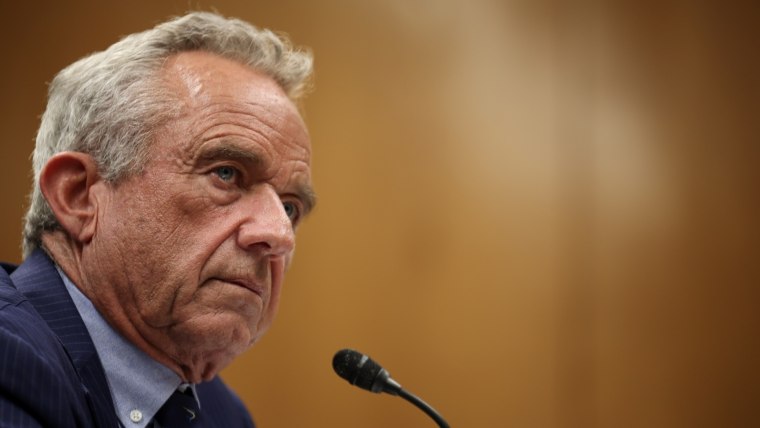
Our surveillance systems’ transparency was demonstrated during Covid-19 vaccine monitoring. When the possibility of an early myocarditis signal emerged, the CDC issued a Health Alert Network notice on May 27, 2021, urging clinicians to report cases to verify whether a true safety signal existed. Once confirmed through enhanced surveillance, the Advisory Committee on Immunization Practices reviewed data publicly on June 23. The FDA added warnings on June 25. The data showed rates peaked at approximately 106 per million second doses in teenage boys in 2021, mostly mild and short-lived. By 2024-25, rates with updated formulations returned to near background levels, as documented in public ACIP presentations.
Our surveillance systems can detect extremely rare adverse events — as rare as 1 event per 1 million doses or even less. These systems identified thrombosis with thrombocytopenia syndrome (blood clots and low platelets) after the J&J vaccine at a few per million doses overall. The sensitivity of these systems would make any widespread vaccine-related chronic disease impossible to miss.
We take vaccine safety extremely seriously. Vaccines are unique medicines given to large numbers of healthy people. Ensuring their safety through rigorous testing and continuous monitoring is critical.
The evidence for vaccine safety and efficacy exists in overwhelming abundance, accessible to anyone willing to examine it.
My current work exemplifies commitment to openness. Our public database is openly accessible, with search strategies available in the spreadsheets for anyone to examine and verify. The Vaccine Integrity Project team discussed our methods at a public webinardemonstrating our commitment to transparency even before publication. Every step of our research process is designed to be reproducible and verifiable.
Beyond clinical trials, thousands of additional studies examine vaccine safety through peer-reviewed research. When concerns arise, they are investigated and results are published, whether confirming or refuting initial hypotheses.
The evidence for vaccine safety and efficacy exists in overwhelming abundance, accessible to anyone willing to examine it. From Washington’s orders to inoculate the Continental Army to today’s real-time safety monitoring systems, American vaccination policy has been built on transparency and evidence.
The data supporting vaccines is not hidden — it is reviewed by the FDA, published in peer-reviewed journals, analyzed worldwide and tracked through public surveillance systems. If vaccines caused widespread chronic disease, our safety monitoring systems would have detected it. They haven’t.
The question before this subcommittee is whether public health policy will continue to be guided by transparent, peer-reviewed evidence. As we face both emerging infectious disease threats and the return of old threats due to declining vaccination coverage — like our current measles outbreak — maintaining public confidence through evidence-based communication remains essential.
The data is public. The evidence is clear. I welcome your questions.
Jake Scott
Dr. Jake Scott is an infectious disease physician and Clinical Associate Professor at Stanford University School of Medicine in the Division of Infectious Diseases and Geographic Medicine.
-
Uncategorized10 months ago
Bob Good to step down as Freedom Caucus chair this week
-

 The Josh Fourrier Show10 months ago
The Josh Fourrier Show10 months agoDOOMSDAY: Trump won, now what?
-
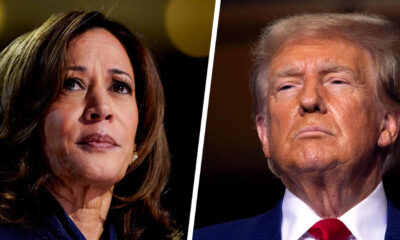
 Politics10 months ago
Politics10 months agoWhat 7 political experts will be watching at Tuesday’s debate
-
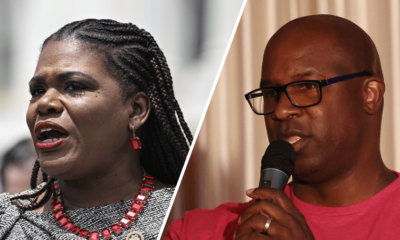
 Politics7 months ago
Politics7 months agoFormer ‘Squad’ members launching ‘Bowman and Bush’ YouTube show
-

 Politics10 months ago
Politics10 months agoHow Republicans could foil Harris’ Supreme Court plans if she’s elected
-

 The Dictatorship7 months ago
The Dictatorship7 months agoPete Hegseth’s tenure at the Pentagon goes from bad to worse
-

 The Dictatorship7 months ago
The Dictatorship7 months agoLuigi Mangione acknowledges public support in first official statement since arrest
-
Economy10 months ago
Fed moves to protect weakening job market with bold rate cut



